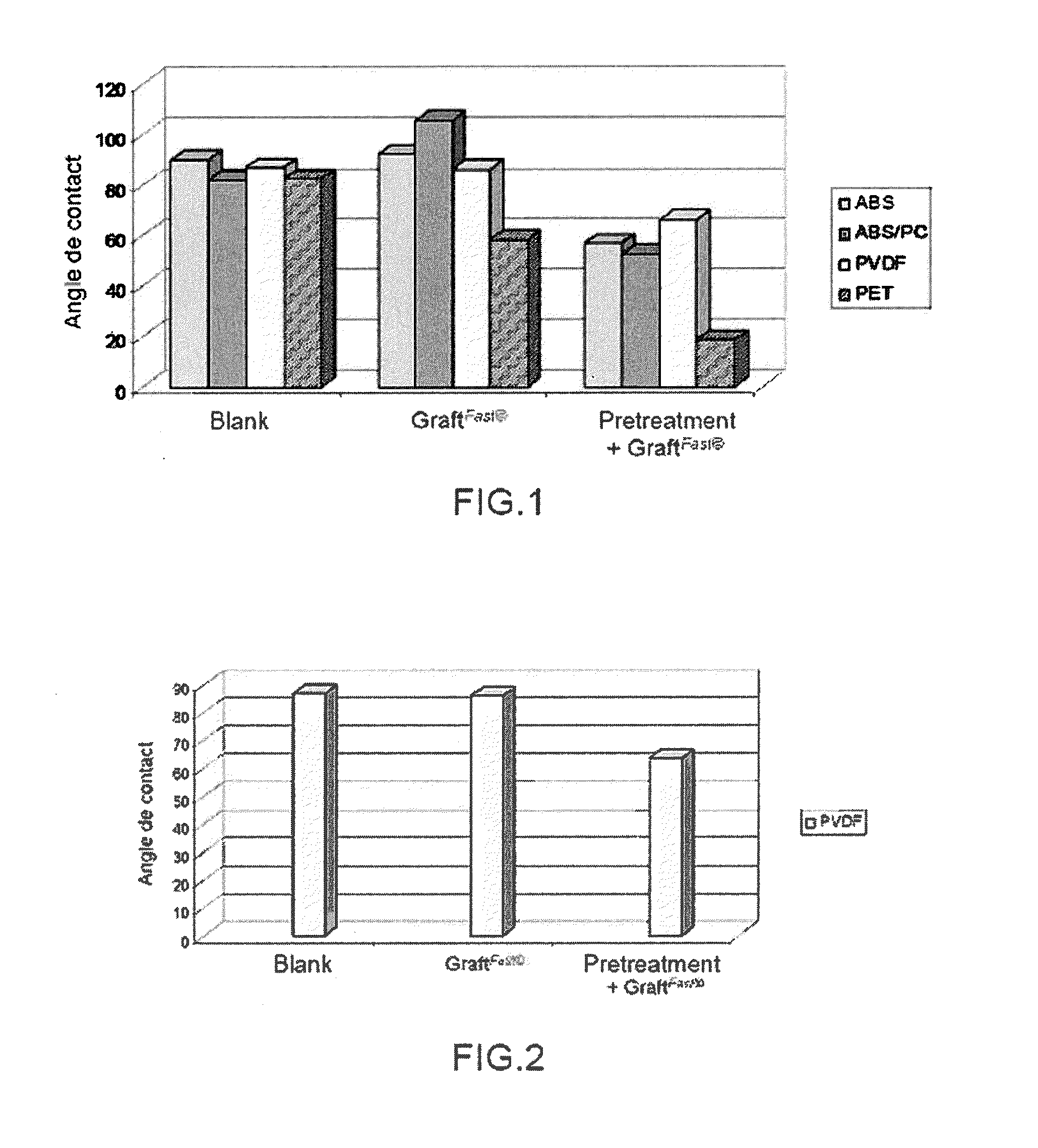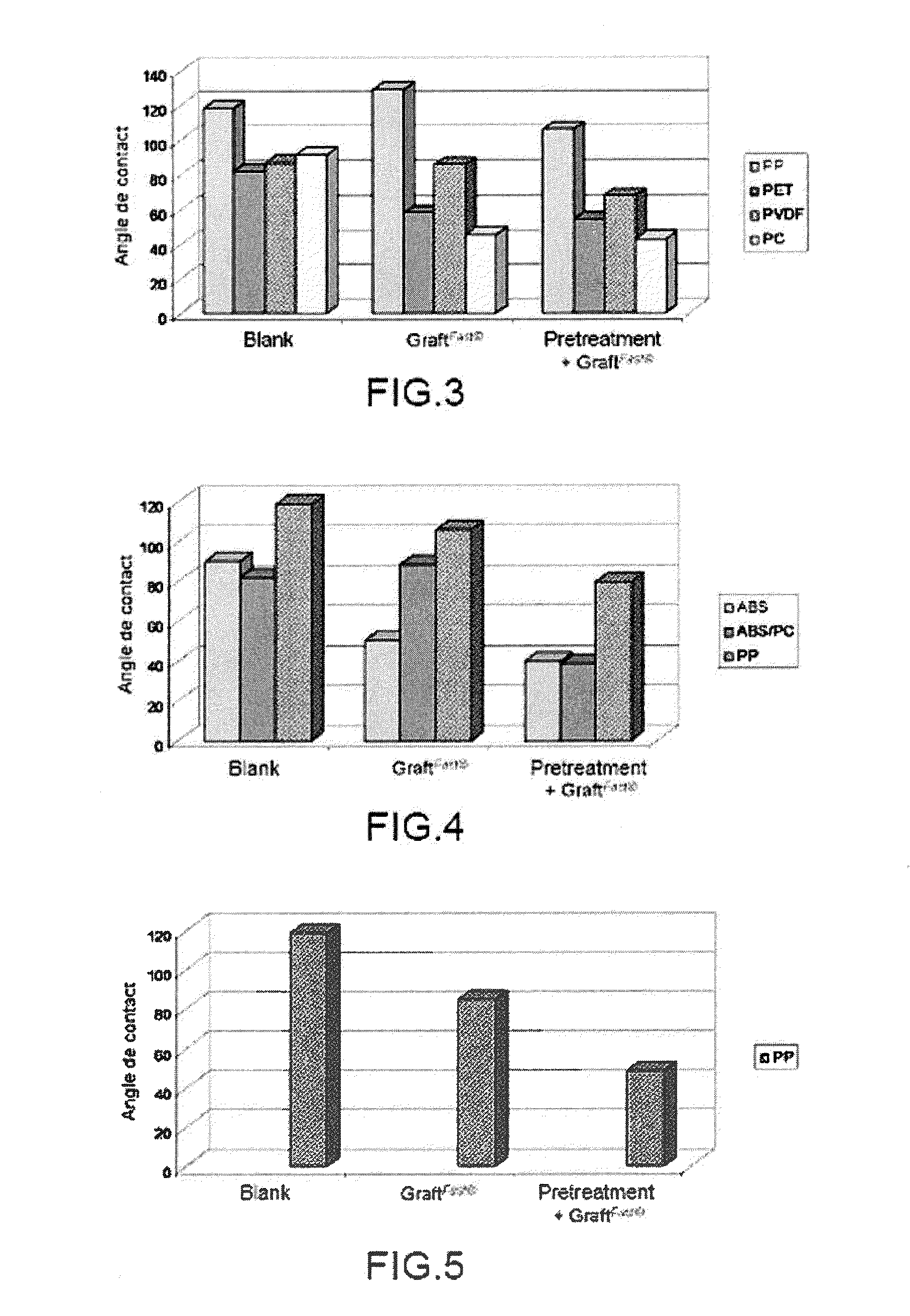Process for the preparation of an organic film at the surface of a solid support with oxidizing treatment
a solid support and organic film technology, applied in the direction of ion implantation coating, liquid/solution decomposition chemical coating, coating, etc., can solve the problems of inability to easily control the thickness of the produced film, formation of adherent films, and no actual grafting between the film and the coated surfa
- Summary
- Abstract
- Description
- Claims
- Application Information
AI Technical Summary
Benefits of technology
Problems solved by technology
Method used
Image
Examples
example 1.1
Oxidation by Fenton Reaction Starting from Iron(II) Tetrafluoroborate
[0202]Iron(II) tetrafluoroborate (1.69 g, 5×10−2 mol) was dissolved in 100 ml of 0.001M sulfuric acid in water. The samples of plastics and / or polymers were dipped in this solution. 12 ml (0.125 mol) of 35% hydrogen peroxide in water were subsequently added while retaining a constant pH of 3. After 25 min, the samples were rinsed with Milli-Q water and subjected to ultrasound in water for 10 min before being dried.
example 1.2
Oxidation by Fenton Reaction Starting from Iron(II) Sulfate
[0203]Iron(II) sulfate (3.475 g, 5×10−2 mol) was dissolved in 25 ml of 0.001M sulfuric acid in water. The samples of plastics and / or polymers were dipped in this solution. 5 ml (0.062 mol) of 35% hydrogen peroxide in water were subsequently added while retaining a constant pH of 3. After 25 min, the samples were rinsed with Milli-Q water and subjected to ultrasound in water for 10 min before being dried.
example 1.3
Oxidation by Treatment with Alcoholic Potassium Hydroxide
[0204]4 g (7.1×10−2 mol) of potassium hydroxide were dissolved in 20 ml of 95% ethanol. The samples of polymers were dipped in this solution for a time typically varying from 20 min to 2 h. The samples were rinsed with Milli-Q water and subjected to ultrasound in water for 10 min before being dried.
PUM
| Property | Measurement | Unit |
|---|---|---|
| thicknesses | aaaaa | aaaaa |
| molecular thickness | aaaaa | aaaaa |
| electrically conducting | aaaaa | aaaaa |
Abstract
Description
Claims
Application Information
 Login to View More
Login to View More - R&D
- Intellectual Property
- Life Sciences
- Materials
- Tech Scout
- Unparalleled Data Quality
- Higher Quality Content
- 60% Fewer Hallucinations
Browse by: Latest US Patents, China's latest patents, Technical Efficacy Thesaurus, Application Domain, Technology Topic, Popular Technical Reports.
© 2025 PatSnap. All rights reserved.Legal|Privacy policy|Modern Slavery Act Transparency Statement|Sitemap|About US| Contact US: help@patsnap.com



